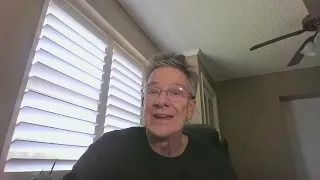Why HELOC demand will surge
Between February 2020 and January 2022, we witnessed something in the mortgage industry that we thought we’d never see — 30-year fixed-rate mortgages under 3.5%. These rates drew a record number of people refinancing their homes, with cash out refinances reaching $1.2 trillion in 2021.
Then, in what felt like an instant, in Q1 2022 mortgage rates skyrocketed and the refi boom ended. As people look for alternate means to access the equity in their homes, home equity lines of credit (HELOCs) are poised to make a comeback. Here’s why:
Homeowners will still want to use the record levels of equity in their homes
The residential real estate industry faces an interesting dynamic of rising mortgage rates while, at the same time, homeowners have record equity in their homes. According to CNBC, homeowner equity is an aggregate $9.9 trillion. The average homeowner has about $185,000 in equity they can access while still keeping a 20% stake in their home.
Taking out a HELOC is a viable option for homeowners who want to keep their primary mortgage, and still tap the equity in their home.
A HELOC is now cheaper than a refi
While the interest rate on a HELOC today is probably higher than the rate on a primary mortgage, homeowners will likely to find that refinancing no longer makes mathematical sense.
Most households have a low rate on their primary mortgage, so doing a cash-out refi will yield a higher monthly payment than keeping the mortgage they already have and adding a HELOC on top.
For example, if a homeowner has a $400,000 mortgage at 3.25% and wants to tap another $100,000 of their equity, they might consider accessing $100,000 of equity through a HELOC versus a cash-out refi:
- Cash-out refi: Accessing $100,000 of equity would mean taking out a $500,000 mortgage at today’s rates, which are averaging over 5%. This will cost $2,684 per month.
- HELOC: If, instead, a homeowner simply adds a $100,000 HELOC at 5%, they’re looking at monthly payments totaling $2,157. Even a 7% HELOC will only cost $2,324 a month. Also, the homeowner is likely paying interest on less than $100,000, since they only pay interest on the amount of the HELOC that they’ve withdrawn. For instance, if the homeowner has only withdrawn $50,000 of the HELOC for a renovation or downpayment on a new home, the person would only be paying interest on the $50,000.
HELOCs offer flexibility
In the current market conditions, here are a couple of aspects of a HELOC homeowners will find most attractive:
First, HELOCs are arguably more flexible than a traditional cash-out refi. Once approved for a HELOC, they can access the line of credit as needed, as opposed to having cash sitting in a savings bank from a refi. In cases where the homeowner ends up needing to take only the minimum required draw from a HELOC, they would only end up paying back that part of the loan. In contrast, when they do a cash-out refi, they’re committed to paying the new principal and interest balance for the duration of the mortgage — likely 15 or 30 years.
Second, and very much related, the monthly payback amounts on HELOCs are more flexible. During months where you need additional capital to finance a home repair, or a move, they may choose to pay the interest only part of the loan.
For the foreseeable future, I anticipate HELOCs being the equity-access vehicle of choice for many U.S. homeowners. Much like 2021 was a record year for refinancing, 2022 could be a record year for HELOCs.
David Friedman is the CEO and co-founder of Knox Financial.
Start Your Loan
with DDA todayYour local Mortgage Broker
Mortgage Broker Largo See our Reviews
Looking for more details? Listen to our extended podcast!
Check out our other helpful videos to learn more about credit and residential mortgages.





